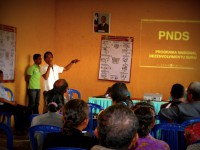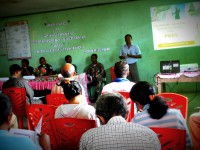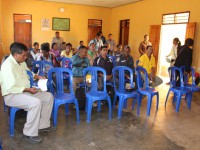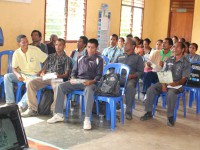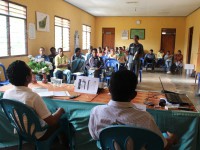The socialization program for Phase 3 of PNDS started on 21st July and runs till early August. This means that all 442 villages in Timor-Leste are now officially implementing PNDS! 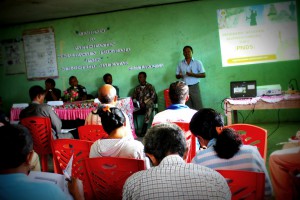
There are 12 steps in the PNDS cycle, and the first step involves socialization (or community meetings) at the sub-district level. The purpose of this is to inform the local authorities, community leaders and civil society of the basic principles of PNDS so that they understand how each village will receive their annual subsidy and how the community will implement that budget.
Antonio Gomes de Araujo, the village chief of Laktos in Covalima district, welcomes the program: “We are grateful to PNDS because the program reaches all the way to our remote village, and through this program we can decide together with the community what it is we want to do in our village.” He also expressed his confidence that the community could implement the projects to a high standard, “We will respond energetically and with quality, because it is up to us to implement this program ourselves.”
As promised by the government, all villages in the country are implementing PNDS before the end of 2014. The full implementation has been phased, with the first phase of 149 villages beginning in September 2013 now reaching the point of starting construction. The second phase began in February 2014 with 91 villages, and they are currently drawing up detailed plans and designs for their chosen projects. Phase three is beginning with sub-district socialization, which is immediately followed by village and neighbourhood socialization meetings where communities choose which members will take part in the PNSD village management team.
PNDS is a national government program to strengthen communities through enabling them to plan, design and implement small scale infrastructure projects themselves, including managing the finances and maintenance. Participation in PNDS is open to everyone in the community including people with disabilities, elderly, women, men and youth.
- Railaku, Ermera
- Maukatar, Covalima
- Railaku, Ermera
- Railaku, Ermera
- Railaku, Ermera

